Occupational safety training for operating LPG liquefied gas cylinders
99,000 ₫
Note: The price above is calculated for one person, and it may vary depending on the number of participants in the training course and market fluctuations. For more accurate pricing support, please refer to the quotation table or contact our consulting staff directly.
Occupational safety is an important issue when operating LPG liquefied gas cylinders and must be addressed promptly to ensure the health and safety of workers while enhancing the reputation of businesses. The Occupational Safety Training course is one of the effective solutions to raise awareness about preventing workplace accidents for workers when handling LPG liquefied gas cylinders.
Table of Contents
Toggle1. Overview of LPG Cylinders
a. What is an LPG Cylinder (Gas LPG)?
An LPG cylinder (Liquefied Petroleum Gas) is a container that holds petroleum-based gas in liquid form, called LPG, for use in applications such as cooking, heating, vehicle fuel, and various industrial uses. LPG typically consists of hydrocarbons like propane and butane.
LPG is extracted from crude oil and natural gas, then processed to remove impurities and filled into cylinders. Inside the cylinder at low temperature and pressure, LPG remains in liquid form. When the cylinder valve is opened and pressure decreases, the LPG changes from liquid to gas, ready for use in various devices and applications.

b. Operating Principle of an LPG Cylinder
The operating principle of an LPG (Liquefied Petroleum Gas) cylinder involves maintaining proper pressure and temperature to keep the LPG in liquid form inside the cylinder and allow its use when needed. Here is a basic overview:
- LPG Cylinder: LPG is stored in a specially designed cylinder that can withstand high pressure. The cylinder is usually made of steel and includes a control valve to regulate gas flow.
- Pressure and Temperature: LPG is kept under high pressure inside the cylinder, which keeps it in liquid form at normal room temperature. This means LPG remains liquid as long as pressure and temperature are maintained at sufficient levels.
- Using LPG: When LPG is needed, the user opens the cylinder valve, reducing the internal pressure. As the pressure drops, LPG begins to change from liquid to gas, which can then be used in various devices and applications.
- Safety Conditions: Maintaining safe pressure and temperature in the cylinder is crucial to prevent accidents and LPG leaks, which could lead to fire or explosion. Therefore, LPG cylinders are usually equipped with safety devices such as pressure sensors and safety valves to ensure safe operation.

c. Industries that Use LPG Cylinders
LPG cylinders are widely used across multiple industries due to their convenience and versatility. Key industries include:
- Food and Cooking Industry: LPG is used in restaurants, hotels, fast food outlets, and food production facilities for cooking and steaming. It is also used in ovens, baking, and other cooking equipment.
- Chemical Industry: LPG can serve as a raw material or fuel for chemical production processes, including thermal processes, heating, and melting furnaces.
- Manufacturing Industry: LPG is used for heat applications in metal processing, glass production, and other manufacturing processes.
- Oil and Gas Industry: LPG is often produced as a byproduct of oil and gas operations and can provide heat for processing in this sector.
- Agriculture: LPG is used for cooking and heating in farms, as well as for sterilization and drying processes.
- Mining and Extraction: LPG can provide heat for drilling, rock processing, and other extraction operations.
- Healthcare Industry: LPG is used in medical equipment such as sterilizers, drug preparation ovens, and other healthcare applications.
- Fisheries and Seafood Industry: LPG is used for melting ice, heating, and creating optimal conditions for packaging and preserving seafood products.
2. Overview of Safety Training for Operating LPG Cylinders
a. What is Occupational Safety Training?
- Occupational safety training for operating LPG cylinders consists of sessions designed to equip workers with knowledge and awareness of accident prevention. Workers directly handling LPG cylinders belong to Group 3.
- This training helps workers identify hazards and avoid risks, minimizing workplace accidents.
REGISTER FOR OCCUPATIONAL SAFETY TRAINING SERVICE
b. Training Duration
Initial Safety Training Duration
- Total training time is at least 24 hours, including exam time.
- 8 hours of theory on safety policies, laws, and occupational hygiene.
- 8 hours of theory on basic occupational safety and hygiene knowledge.
- 4 hours of theory on specialized training content.
- 2 hours of practical exercises on specialized training content.
- 2 hours of theory exam at the end of training.
Training centers schedule sessions according to workers’ availability. Typically, 6 sessions are held over 3 days if continuous training is possible.
Periodic Safety Training Duration
- Before the occupational safety card expires, workers must attend periodic safety training, with the duration being at least 50% of the initial training time.
Explanation: Periodic safety training should last at least 12 hours, including exam time. Upon successful completion and passing the exam, the worker’s safety card will be renewed.
c. Training Content
| No. | TRAINING CONTENT | DURATION (HOURS) | |||
| Total | Including | ||||
| Theory | Practical | Exam | |||
| I | Safety Policies and Occupational Hygiene Laws | 8 | 8 | 0 | 0 |
| 1 | Overview of occupational safety and hygiene legislation. | 6 | 6 | ||
| 2 | Standards and technical regulations for occupational safety and hygiene. | 1 | 1 | ||
| 3 | Specific regulations by government authorities regarding safety when constructing, expanding, or renovating facilities, and using equipment, materials, and substances requiring strict safety compliance. | 1 | 1 | ||
| II | Basic Occupational Safety Knowledge | 8 | 8 | 0 | 0 |
| 1 | Basic knowledge of workplace hazards. | 4 | 4 | ||
| 2 | Methods to improve working conditions. | 1 | 1 | ||
| 3 | Safety culture in production and business. | 1 | 1 | ||
| 4 | Rights and duties of employers and workers; safety policies; roles of safety officers. | 1 | 1 | ||
| 5 | Workplace safety rules, signage, use of protective equipment, first aid, and occupational disease prevention skills. | 1 | 1 | ||
| III | Specialized Training Content | 6 | 4 | 2 | 0 |
| Comprehensive knowledge of equipment and substances, risk assessment and management, safe operating procedures with high-risk substances and machinery. | 6 | 4 | 2 | ||
| IV | Final Safety Training Exam | 2 | 2 | 0 | 0 |
| Total | 24 | 22 | 2 | ||
See more training content for all 6 groups
d. Occupational Safety Card
After completing safety training and passing the exam, workers will be issued an Occupational Safety Card (commonly called Group 3 Safety Certificate).
The Group 3 safety card displays personal information, job, working environment, training duration, and includes an official stamp and signature confirming training completion.
According to Clause 2 of Article 24, Decree 44/2016/ND-CP, there are two cases:
- If the worker has a labor contract with the employer, the employer must sign and stamp the safety card after the worker completes training and passes the exam.
- If the worker is freelance or seasonal without a labor contract, the training unit must sign and stamp the safety card after completion of training and passing the exam.

Group 3 Occupational Safety Card for LPG Cylinder Operation
3. Hazards When Operating LPG Cylinders
Operating liquefied petroleum gas (LPG) cylinders requires caution and strict adherence to safety rules to prevent hazards. Below are some common hazards when handling LPG cylinders:
- Fire and Explosion: LPG is highly flammable and explosive. Any gas leak combined with a flame or heat source can cause a dangerous fire or explosion. This can occur if the cylinder is damaged or improperly used.
- Gas Leaks: Any LPG leakage from the cylinder, valve, or piping can create a hazardous environment. LPG can accumulate in poorly ventilated areas, and if it comes into contact with a flame or heat source, a fire or explosion may occur.
- Overpressure: If an LPG cylinder is over-pressurized due to high temperature or other malfunctions, it can explode, causing injuries and damage.
- LPG Loss: Loss of LPG not only wastes fuel but also poses environmental and health risks. Loss may occur due to leaks or incidents during transport and storage.
- Incidents During Cooking or LPG Use: When using LPG for cooking or heating, improper use of equipment or leaving equipment unattended can lead to fire, explosion, or carbon monoxide (CO) poisoning.
- Storage and Transport Incidents: LPG must be transported and stored according to safety regulations. Any collisions, impacts, or incidents during these processes can cause leaks and explosion risks.
- Poor Ventilation: Using LPG in a poorly ventilated space can result in gas accumulation, increasing the risk of fire, explosion, or poisoning.
To ensure safety when operating LPG cylinders, users must follow specific safety guidelines for each application and always inspect cylinders, valves, and piping to ensure there are no leaks or damages. Regular maintenance and using safety devices such as leak sensors and fire alarms are also essential.

4. Measures to Control Workplace Accidents When Operating LPG Cylinders
Controlling workplace accidents during LPG cylinder operation is crucial for ensuring the safety of workers and the surrounding environment. Here are important measures to prevent accidents when handling LPG cylinders:
- Training and Education: Ensure all personnel involved in LPG operations are trained on safety rules and emergency measures. Training should cover the use of safety equipment, leak detection, and emergency response procedures.
- Regular Inspections: Periodic inspection of LPG cylinders to detect safety issues such as mechanical damage or wear, reducing the risk of workplace accidents.
- Use Safety Equipment: Ensure all safety devices like leak sensors, safety valves, and fire alarms are functioning correctly. Any faulty equipment should be repaired or replaced immediately.
- Implement Explosion Prevention Measures: In LPG work areas, ensure no open flames, avoid smoking, use safe electrical devices, and prevent oil or petroleum products from contacting LPG.
- Manage Storage and Transport: LPG storage and transport must comply with safety regulations. Cylinders should be stored in ventilated areas, away from heat and fire sources, and securely fastened during transport using safe vehicles.
- Leak Testing: Before using LPG from a cylinder, check for leaks using soapy water or a specialized leak detection solution.
- Use Personal Protective Equipment (PPE): Workers should wear protective gear such as goggles, gloves, chemical-resistant coats, and face masks when necessary.
- Conduct Regular Safety Checks: Organize frequent inspections and self-checks to ensure safety measures are consistently followed.
- Emergency Planning: Identify and practice emergency plans to handle potential hazards.

5. Benefits of Occupational Safety Training
An Toàn Nam Việt provides enterprises with the following benefits upon completing occupational safety training courses under Decree 44/2016/ND-CP on occupational safety and hygiene for companies and businesses:
- Workers can recognize potential workplace hazards and take preventive measures to avoid accidents.
- Enterprises can establish risk prevention measures in production, operation, and maintenance processes.
- Reduce costs associated with safety incidents in the workplace.
- Uninterrupted production increases labor productivity and product quality.
- Compliance with labor safety laws, avoiding legal risks.
- Enhances the company’s credibility and professionalism, boosting the brand image.
Nam Việt’s training programs provide individuals with knowledge and skills to prevent external risks, protecting them from injuries or more severe consequences.
REGISTER FOR OCCUPATIONAL SAFETY TRAINING SERVICE
6. Customer Feedback After Training
An Toàn Nam Việt has many years of experience collaborating with businesses in Vietnam, particularly in the southern provinces. Our commitment to occupational safety training is highly valued, and we continuously strive for professionalism. Positive feedback and constructive suggestions from our partners drive our growth. Here are some testimonials:
See more customer interviews after using our service from An Toàn Nam Việt
7. An Toàn Nam Việt’s Occupational Safety Training Capacity
An Toàn Nam Việt is a leading and reputable occupational safety training center in Vietnam. Our training courses are continuously conducted at factories, workshops, and construction sites nationwide (all 63 provinces).
REGISTER FOR OCCUPATIONAL SAFETY TRAINING SERVICE
Occupational Safety Training License
- An Toàn Nam Việt has been inspected and certified by the Department of Safety, Ministry of Labor – Invalids and Social Affairs to meet the requirements for occupational safety and hygiene training. This further strengthens our training capacity.

Training Materials and Lectures
- All training materials are reviewed and verified to ensure content accuracy and effective application in courses.
- Our instructors’ teaching methods follow An Toàn Nam Việt standards, based on expert research and practical experience to maximize knowledge retention.
Facilities
- Proper classroom conditions enhance teaching efficiency and knowledge absorption.
- Our training facilities feature spacious, well-lit classrooms equipped with teaching tools to meet standards.
8. Nationwide Reputable Safety Training Center
At An Toàn Nam Việt, occupational safety training is our top priority. We carefully prepare all tools, materials, and facilities to ensure effective learning.
Our instructors are experts with extensive experience, even conducting research to identify workplace hazards and preventive measures. Lessons are practical, engaging, and easy for workers to understand, aligning with Decree 44/2016/ND-CP.
Our training center provides:
- Competitive training costs without compromising quality.
- Flexible schedules to suit company production needs.
- Fast certification procedures compliant with the law.
- Experienced instructors.
- Controlled classroom conditions to maximize learning efficiency.
- Lessons tailored to workplace safety in enterprises.
- Dedicated, professional service to assist customers accurately and quickly.

9. Additional Occupational Safety Training References
- Occupational Safety Materials for Operating LPG Cylinders
- Occupational Safety Training Material Set
- Occupational Safety Test Set
- Multiple-Choice Test for LPG Cylinder Safety
- LPG Cylinder Safety Training Slides
1 review for Occupational safety training for operating LPG liquefied gas cylinders
No comments yet

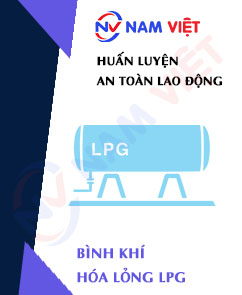
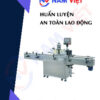
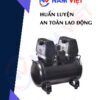






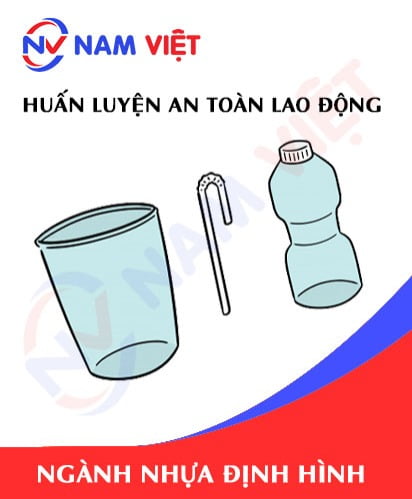


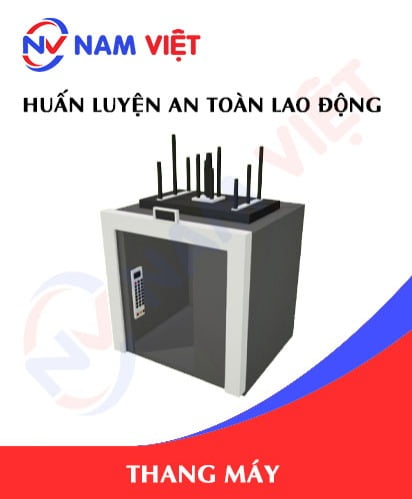
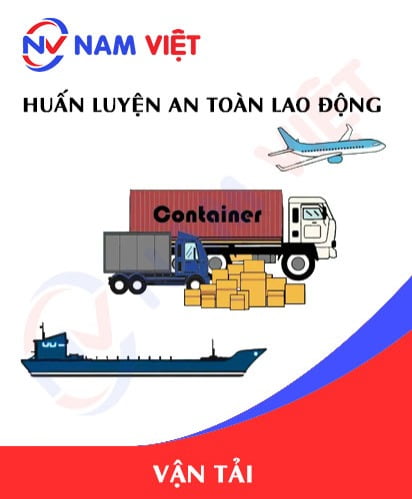
phanminhhang341
Trung tâm huấn luyện an toàn lao động chuyên nghiệp ở Việt Nam nha